CAA News Today
Apply for a 2017 Professional-Development Fellowship
posted by CAA — Jul 05, 2017
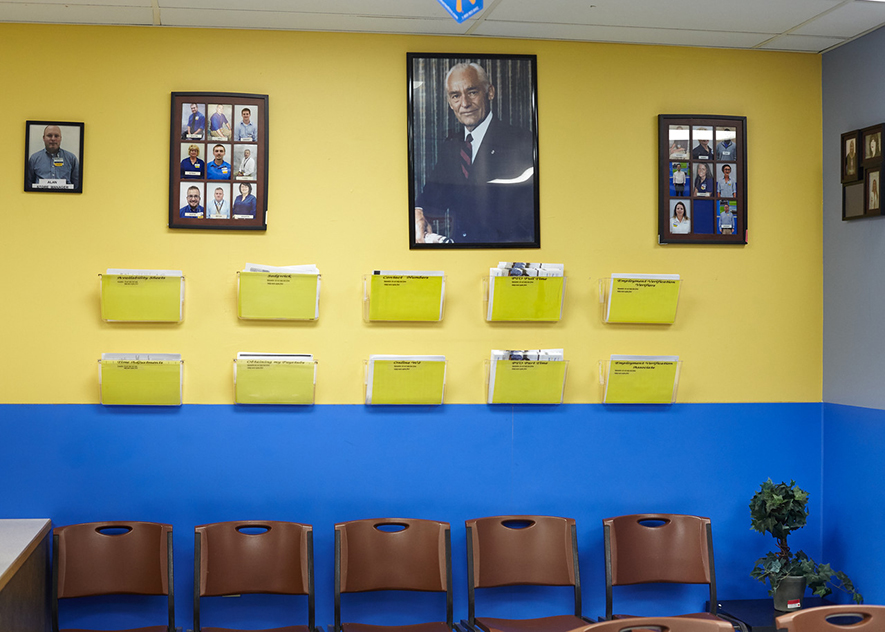
Photography by Daniel Seth Kraus, 2016 Professional-Development Fellowship Awardee
CAA Announces the opening of its Professional-Development Fellowship for 2017. The program supports promising artists, designers, craftspeople, historians, curators, and critics who are enrolled in MFA, PhD, and other terminal-degree programs nationwide.
Fellows are honored with $10,000 grants to support their work, whether it be for job-search expenses or purchasing materials for the studio.
One award will be presented to a practitioner—an artist, designer, and/or craftsperson—and one award will be presented to an art, architecture, and/or design historian, curator, or critic. Fellows also receive a free one-year CAA membership and complimentary registration to the 2018 Annual Conference in Los Angeles, February 21-24. Honorable mentions, given at the discretion of the jury, also earn a free one-year CAA membership and complimentary conference registration.
CAA initiated its fellowship program in 1993 to help student artists and art historians bridge the gap between their graduate studies and professional careers.
CWA Picks for July 2017
posted by CAA — Jul 03, 2017
Each month, CAA’s Committee on Women in the Arts selects the best in feminist art and scholarship. The following exhibitions and events should not be missed.
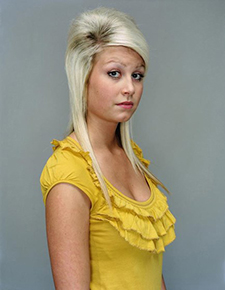
Rineke Dijkstra, Amy, The Krazy House, Liverpool, December 23, 2008, 2008 (collection of the artist)
Rineke Dijkstra: An Ode
Stedelijk Museum
Museumplein 10, 1071 DJ, Amsterdam, Netherlands
May 20–August 6, 2017
In celebration of Rineke Dijkstra’s recent honor of receiving the prestigious Hasselblad Foundation’s International Award in Photography for 2017, the Stedelijk Museum has mounted a small but excellent curated exhibit of this lauded Dutch artist. Twenty-one photographs and four videos are included in An Ode, which showcases Dijkstra’s masterful technique and remarkable sensitivity to her youthful subjects and the delicate process of their coming of age. As the artist noted, “With young people everything is much more on the surface—all the emotions. When you get older you know how to hide things.” Under her keen eye and deft hand, portraits of adolescence become something intimate and lovely and compelling.
The exhibit, which draws from Stedelijk’s own extensive collection of her work, as well as loans from the artist, is meant to be a celebration as well as an amuse-bouche for later offerings in the season. Later this year, the museum will present Dijkstra’s work Almerisa (1994–2008), a series of portraits that follows the life of a young Bosnian refugee girl from her arrival in the Netherlands to her adulthood.
Acolytes of this contemporary photographer can also see an extensive retrospective of her work at the Louisiana Museum (Copenhagen, Denmark) this fall, and then at the Museum de Pont (Tilberg, the Netherlands) in early 2018.
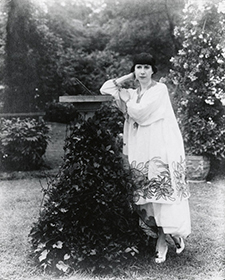
Florine Stettheimer, photograph by Peter A. Juley & Son, ca. 1917–20 (image provided by Peter A. Juley & Son Collection, Photograph Archives, Smithsonian American Art Museum, Washington, DC)
Fahrelnissa Zeid
Tate Modern
Bankside, London SE1 9TG
June 13–October 8, 2017
In the first major retrospective of her work, the Turkish artist Fahrelnissa Zeid, a pioneer in the European avant-garde of the 1940s and 1950s, dazzles. Trained in Paris and Istanbul (one of the first women to go to art school there), she produced work that synthesized historical and contemporary Middle Eastern and European artistic practices. Zeid, a princess and Muslim, cut an unusual figure in the midcentury art world. Her oeuvre is astonishingly diverse, ranging from large abstract paintings to smaller figurative pieces, and from traditional materials to new media such as chicken bones, which she painted, cast into polyester resin, and fashioned into stained-glass-like objects.
Zeid’s vibrant and energetic works were widely exhibited and enjoyed critical success, and yet her work fell into obscurity in subsequent decades. Frances Morris, the director of Tate Modern, told the Guardian of the rediscovery of her work on a 2008 trip to Istanbul, saying: “We were stunned to encounter for the first time in our lives, these huge, ornate, decorative, multifaceted, brilliantly coloured, swirling abstract paintings. We’d never seen her work in our lives and we’d never seen anything like it. It was a really exciting moment.” The retrospective of Fahrelnissa Zeid is part of the museum’s stated commitment to showcase artists of the modern era who have been overlooked and underrepresented in the art world.
Florine Stettheimer: Painting Poetry
Jewish Museum
1109 5th Ave, New York, New York
May 5–September 24, 2017
Writing for Art in America in 1980, the art historian Linda Nochlin made this assessment of Florine Stettheimer’s work: “Florine Stettheimer, the artist, existed in this world, it is true, but still somewhat apart from it––as her painting exists apart from the major currents of her time.” Stettheimer, who was born in Rochester and studied at the Art Student League of New York, is known for her affected paintings (sometimes with accompanying sculptural, scalloped frames), that reflect the comings and goings of her family—most notably her two other sisters—and a host of artists, writers, and other members of New York’s intelligentsia. Marcel Duchamp was a friend, and she was a frequent theater-goer, even designing the sets and costumes for the 1934 production of Gertrude Stein’s opera intended for an all-black cast, Four Saints in Three Acts. Oh, and she wrote poetry, which is a constant presence throughout this exhibition at the Jewish Museum. Reading her poetry, like looking at some of her works, can sometimes feel like an exhausting account of the pleasures of being one of the “haves”: “My attitude is one of Love / is all adoration / for all the fringes / all the color / all tinsel creation / I like slippers gold / I like oysters cold / and my garden of mixed flowers / and the sky full of towers / and traffic in the streets / and Maillard’s sweets / and Bendel’s clothes / and Nat Lewis hose / and Tappé’s window arrays / and crystal fixtures / and my pictures / and Walt Disney cartoons / and colored balloons.” Still, there’s a soulful seeing behind her spindly figures, especially her self-portraits and portraits of her closest family members. Taken together these paintings are a masterclass in forging an artistic path of one’s own.
Star Montana: I Dream of Los Angeles
Beta Main
114 W. 4th St., Los Angeles, CA
May 7–July 23, 2017
Star Montana’s photographs line the walls of the Main Museum’s Beta space—each a portrait of someone who the artist encountered on the streets or met through an open call. Some are friends. Most are strangers. Yet all are given a kind of monumental attention in Montana’s practice. Alongside each photograph is a small piece of writing, reflecting on the circumstances in which the picture was taken, the first time Montana met her subject, or a meditation on the vagaries of dailyness living in East and South Los Angeles. The viewer scans between words and picture, looking for the same vulnerabilities and strengths in the images that appear in the text. The colors of these photographs are lush, and the relationship between sitter and photographer is palpable, close. It is an ode to this great and complex city, as evinced through the people who live in it.
Gray Matters
Wexner Center for the Arts
Ohio State University, 1871 North High Street, Columbus, OH
May 20–July 30, 2017
Now on view at the Wexner Center for the Arts, Gray Matters brings together thirty-seven contemporary women artists exploring the practice of grisaille—the French term for working in shades of gray. “Ranging from emerging to well-established, these artists challenge an all-too-simplistic notion of colorless ‘neutrality’ as they reveal the variegated spectrum of black, white, gray, and everything in between.”
The more than fifty works include a variety of mediums and media, from sculpture to portraiture, video to graphite drawings. Among the works is Mickalene Thomas’s Hair Portrait #20 (2014). Known for her colorful canvasses, Thomas tones down her palette in Hair Portrait #20 “without relinquishing her celebratory use of rhinestones.” Also on view in the exhibition is Bethany Collin’s A Pattern or Practice (2015). In this piece the viewer is confronted with a wall installation of ninety-one blind-embossed portions of the US Department of Justice report on the Ferguson police department. “The show goes incredibly quiet with an idea that is incredibly loud,” Michael Goodson, senior curator of exhibitions, described arriving at the neatly spaced white sheets, with the words of the report pushing up the fibers of the paper.
Other artists in the exhibition include: Tauba Auerbach, Carol Bove, Gisele Camargo, Vija Celmins, Bethany Collins, Marsha Cottrell, Tacita Dean, Tara Donovan, Marlene Dumas, Michelle Grabner, Josephine Halvorson, Mona Hatoum, Roni Horn, Cristina Iglesias, Jennie C. Jones, Toba Khedoori, Laura Lisbon, Suzanne McClelland, Julie Mehretu, Katie Paterson, Joyce Pensato, Amalia Pica, Mary Reid Kelley, Michal Rovner, Nancy Rubins, Arlene Shechet, Erin Shirreff, Amy Sillman, Xaviera Simmons, Diane Simpson, Lorna Simpson, Avery Singer, Michelle Stuart, Mickalene Thomas, Kara Walker, Rachel Whiteread, and Carmen Winant.
A video of the exhibit, behind the scenes with artists’ interviews, can be found on YouTube here: https://www.youtube.com/watch?v=KIcdKkJV3Mg.
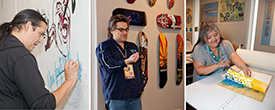
Melanie Yazzie, Gregg Deal, and Walt Pourier
Melanie Yazzie, Gregg Deal, Walt Pourier: Action X Community X Togetherness
Denver Art Museum
100 W 14th Avenue Pkwy, Denver, CO
May 6–September 7, 2017
Alumni of the Native Arts Artists-in-Residence program at the Denver Art Museum return for a summer of collaboration and creation. Melanie Yazzie, Gregg Deal, and Walt Pourier are cocreating through a project titled Action X Community X Togehterness X.
The Native Arts Artists-in-Residence program kicked off in 2012 with Yazzie and has gone on to host many established and up-and-coming artists working across media. Yazzie, a sculptor, painter, printmaker, and installation artist, often collaborates with indigenous artists, including those from groups in New Zealand, Siberia, Australia, and Canada, among others. Her work is informed and shaped by personal experiences and tries to tell many stories about things both real and imagined. It follows the Diné dictum “walk in beauty” literally, creating beauty and harmony.
“My artwork is culturally based in my heritage of being a Diné (Navajo) person. The artworks stem from the thought and belief that what we create must have beauty and harmony from within ourselves, from above, below, in front, behind and from our core. We are taught to seek out beauty and create it with our thoughts and prayers. I feel that when I am making my art, be it a print, a painting or a sculpture, I begin by centering myself and thinking it all out in a ‘good way,’ which is how I was taught from an early age. My work speaks about travel and transformation.”
In the joint projects Yazzi, Deal, and Pourier will host talks, tours, and workshops at two Untitled Final Fridays, on July 28, and August 25. They will hold a hands-on artmaking workshop at the Friendship Powow and American Indian Cultural Celebration on September 9 also.
News from the Art and Academic Worlds
posted by Christopher Howard — Jun 28, 2017
Each week CAA News summarizes eight articles, published around the web, that CAA members may find interesting and useful in their professional and creative lives.
Eighteen Artists Share the Books That Inspire Them
Some artists wear their literary loves on their sleeves. More often than not, though, we have no idea what artists are reading, no idea what books have shaped their life and work. So we asked eighteen of our favorites to help compile an eclectic, artsy summer-reading list. (Read more from Artsy.)
Why Didn’t Great Painters of the Past Reach the Level of Realism Achieved Today?
They did. I’d argue to the death that they exceeded it. Forgive me if I come off as pedantic, but this exact question hits me passionately. The biggest misconception among nonartists and amateurs is that more detail equals more realism in art. (Read more from Quora.)
Should Robot Artists Be Given Copyright Protection?
When a group of museums and researchers in the Netherlands unveiled a portrait entitled The Next Rembrandt, it wasn’t a long-lost painting but a new computer-generated artwork that had analyzed thousands of works by the famous seventeenth-century Dutch artist. The result is a portrait based on the styles and motifs found in Rembrandt’s art but produced by algorithms. (Read more from Phys.org.)
Old Criticisms, New Threats
Professors have long been political targets. But a spate of recent threats against scholars—including two that have led to campus closures—is raising fresh concerns about safety and academic freedom. (Read more from Inside Higher Ed.)
Protect Scholars against Attacks from the Right
Threats to scholars are growing. John Eric Williams of Trinity College and Dana Cloud from Syracuse University are among the latest professors to face “physical threats or harassment, or both, for their political speech.” Yet at a time of declining funding for higher education, administrators often become less courageous and more beholden to deep-pocketed donors. (Read more from Inside Higher Ed.)
City of Atlanta Settles Lawsuit with Street Artists
The city of Atlanta has agreed not to enforce an ordinance that requires street artists to obtain a series of approvals to retain murals that already exist or to paint new ones. The decision resolves a lawsuit filed by a group of local artists and property owners, and the settlement was part of a consent order signed last week by US District Judge Amy Totenberg. (Read more from the Atlanta Journal-Constitution.)
What Did You See in That Painting?
In a small-scale study, a research team led by Francesco Walker of Vrije University has presented evidence that children and adults look at works of art quite differently, with kids focusing first on visually stimulating elements. Adults, in contrast, try to make sense of the thing from the get-go. (Read more from Pacific Standard.)
The World’s Art Is under Attack—by Microbes
We’re used to seeing famous works of art and historical artifacts marred by the elements. They can be eroded by wind and water, faded by sunlight, or nibbled by insects. But cultural relics can also be damaged by hordes of even tinier invaders: bacteria, fungi, and algae. (Read more from Popular Science.)
News from the Art and Academic Worlds
posted by Christopher Howard — Jun 21, 2017
Each week CAA News summarizes eight articles, published around the web, that CAA members may find interesting and useful in their professional and creative lives.
Artist Sam Durant Was Pressured into Taking Down His Scaffold. Why Doesn’t He Feel Censored?
Sam Durant’s sculpture Scaffold had been exhibited in Europe three times, but upon landing in Minneapolis for the reopening of the Walker Art Center’s Sculpture Garden, it sparked a media firestorm. Native American activists said it trivialized one of the ghastliest episodes in Dakota indigenous history. (Read more from the Los Angeles Times.)
NCAC Statement Criticizing Decision to Destroy Controversial Sculpture
As a coalition of national and international organizations devoted to promoting creative freedom, we strongly oppose the Walker Art Center’s decision to dismantle and destroy a controversial public sculpture. Scaffold, a 2012 work by Sam Durant, was intended to comment on capital punishment and its disproportionate effect on people of color. (Read more from the National Coalition against Censorship.)
Classicist Receives Death Threats from Alt-Right over Art-Historical Essay
Sarah E. Bond, a historian of Rome and an assistant professor in the Classics Department at the University of Iowa, has received death threats and is being targeted by the alt-right for publishing an article on polychromy in the ancient world. “They viewed the piece as ‘liberal professor says that all white statues are racist,’” Bond said. “And that is clearly not what the piece is about.” (Read more from Artforum.)
Threats for What She Didn’t Say
Scholars vary in how and to what extent they engage with the public. Sarah Bond from the University of Iowa works at the high end of the engagement spectrum, via a blog, social media, and a column in Forbes. She’s described her efforts as a way of making antiquities accessible to all, but recent threats she’s received demonstrate the potential perils of that outreach. (Read more from Inside Higher Ed.)
As the 1 Percent Washes Their Money through Arts Funding, Artists Respond
At the 2017 Whitney Biennial, visitors were greeted by a not usually seen in museums: “The two greatest stores of wealth internationally today [are] contemporary art [… and] apartments in Manhattan.” The words, from Larry Fink, a member of President Trump’s Strategic and Policy Forum and the CEO of BlackRock, were written over a craggy graph carved into the wall that tracked the rising value of the debt levels owned by the firm. (Read more from Salon.)
How Artists, Scientists, and Entrepreneurs Get Their Creative Juices Flowing
It takes imagination to be creative, and it takes creativity to innovate. Pentagram’s legendary graphic designer Paula Scher gets her best ideas when she is in boring situations: “I realize that when I’m sitting in a taxicab in traffic, or on my way to the airport, or waiting to get on a plane, or trapped in some other boring situation, that’s when I get the best ideas, because I’ve got nothing else interfering with it….” (Read more from Inc.)
The Ten Essays That Changed Art Criticism Forever
There has never been a time when art critics held more power than during the second half of the twentieth century. As part of the larger midcentury “culture wars,” art critics began to take on greater influence than before. For a time, two writers in particular—who began as friends and remained in the same social circles for much of their lives—set the stakes of the debates surrounding the maturation of American art that would continue for decades. (Read more from Artspace Magazine.)
How A $165 Million Painting Is Funding Criminal Justice Reform
Agnes Gund recently sold a $165 million painting to benefit social justice and is challenging others in the art world to follow suit. Proceeds from the sale of Roy Lichtenstein’s 1962 Masterpiece, which once hung over her mantel, will go toward the new Art for Justice Fund, an initiative designed to support criminal justice reform at state and local levels throughout the country, primarily through the sale of art. (Read more from the Huffington Post.)
New in caa.reviews
posted by CAA — Jun 16, 2017
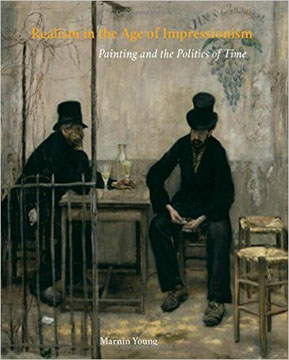 Mary Hunter reviews Realism in the Age of Impressionism: Painting and the Politics of Time by Marnin Young. The author “provides an original, compelling argument about how transformations in the perception of temporality fueled a reengagement with Realist painting in France.” A “smart, engaging” volume, it “will make a lasting mark … on the central role of temporality in the history of modern art.” Read the full review at caa.reviews.
Mary Hunter reviews Realism in the Age of Impressionism: Painting and the Politics of Time by Marnin Young. The author “provides an original, compelling argument about how transformations in the perception of temporality fueled a reengagement with Realist painting in France.” A “smart, engaging” volume, it “will make a lasting mark … on the central role of temporality in the history of modern art.” Read the full review at caa.reviews.
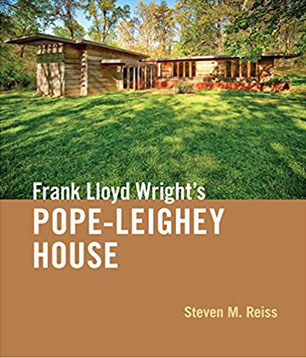 Jane King Hession discusses Steven M. Reiss’s Frank Lloyd Wright’s Pope-Leighey House. This “skillful retelling of the complex history of a 1,200-square foot Usonian house” both “rigorously analyzes site issues” and “reflects on broader topics including changing social attitudes toward housing in the postwar years” and “the nascent yet evolving preservation movement in the United States in the early 1960s.” Read the full review at caa.reviews.
Jane King Hession discusses Steven M. Reiss’s Frank Lloyd Wright’s Pope-Leighey House. This “skillful retelling of the complex history of a 1,200-square foot Usonian house” both “rigorously analyzes site issues” and “reflects on broader topics including changing social attitudes toward housing in the postwar years” and “the nascent yet evolving preservation movement in the United States in the early 1960s.” Read the full review at caa.reviews.
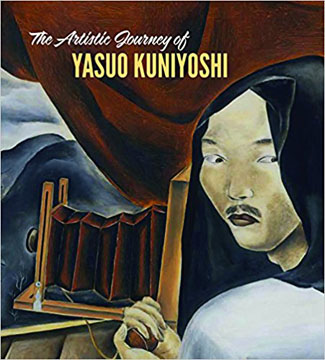 Sybil E. Gohari discusses The Artistic Journey of Yasuo Kuniyoshi, an exhibition and catalogue organized by the Smithsonian American Art Museum. The show “chronicles this important mid-century artist” whose work “combines American folk and Surrealist art with dreamlike perspectives,” highlighting “the figurative dimension” of his art and enhancing “an understanding of the period by presenting its diversity.” Read the full review at caa.reviews.
Sybil E. Gohari discusses The Artistic Journey of Yasuo Kuniyoshi, an exhibition and catalogue organized by the Smithsonian American Art Museum. The show “chronicles this important mid-century artist” whose work “combines American folk and Surrealist art with dreamlike perspectives,” highlighting “the figurative dimension” of his art and enhancing “an understanding of the period by presenting its diversity.” Read the full review at caa.reviews.
Grants, Awards, and Honors
posted by CAA — Jun 13, 2017
CAA recognizes its members for their professional achievements, be it a grant, fellowship, residency, book prize, honorary degree, or related award.
Grants, Awards, and Honors is published every two months: in February, April, June, August, October, and December. To learn more about submitting a listing, please follow the instructions on the main Member News page.
June 2017
Marina Berio, chair of the general studies in photography program at the International Center of Photography in New York, has won a 2017 fellowship in photography from the John Simon Guggenheim Memorial Foundation.
Noga Bernstein, a doctoral student in art history at Stony Brook University, State University of New York, has received a 2017 Henry Luce Foundation/ACLS Dissertation Fellowship in American Art from the American Council of Learned Societies. Her dissertation topic is “Global Age Design: Ruth Reeves and Cross-Cultural Practice.”
Elizabeth Buhe, a doctoral candidate in art history at New York University’s Institute of Fine Arts, has been awarded a 2017 Henry Luce Foundation/ACLS Dissertation Fellowship in American Art from the American Council of Learned Societies for her dissertation examining Sam Francis and midcentury abstract painting, titled “Sam Francis: Functional Abstraction.”
Jennifer Chuong, a PhD student in the history of art and architecture at Harvard University in Cambridge, Massachusetts, has received a 2017 Henry Luce Foundation/ACLS Dissertation Fellowship in American Art from the American Council of Learned Societies. She will continue work on “Surface Experiments in Early America.”
Leslie Cozzi, curatorial associate for the Hammer Museum at the University of California, Los Angeles, has won the 2017–18 Andrew W. Mellon Foundation/National Endowment for the Humanities Post-Doctoral Rome Prize in modern Italian studies. During her time at the American Academy in Rome, she will work on “Fra: Relation and Collaboration in Contemporary Italian Art.”
Lisa Deleonardis, Austen-Stokes Professor in the Department of the History of Art at Johns Hopkins University in Baltimore, Maryland, has received the 2017–18 Charles K. Williams II Rome Prize in historic preservation and conservation. At the American Academy in Rome, she will continue work on “A Transatlantic Response to Worlds That Shake: Jesuit Contributions to Anti-Seismic Building Design in Early Modern Italy and Peru.”
Cécile Fromont, assistant professor in the Department of Art History at the University of Chicago in Illinois, has won a 2017–18 Rome Prize in Renaissance and early modern studies from the American Academy in Rome. Her project is titled “Images on a Mission: Cross-Cultural Encounters and Visual Mediation in Early Modern Kongo and Angola.”
Jennifer Germann, associate professor in the Department of Art History at Ithaca College in Ithaca, New York, has received a 2017 Summer Stipend of $6,000 from the National Endowment for the Humanities. The funds will support “A Study of the Portrait of Dido Elizabeth Belle and Lady Elizabeth Murray, an Eighteenth-Century British Artwork.”
Ken Gonzales-Day, professor of art at Scripps College in Claremont, California, has been awarded the 2017 fellowship in the category of photography by the John Simon Guggenheim Memorial Foundation.
Saisha M. Grayson, a PhD candidate in art history at the Graduate Center, City University of New York, has been awarded a 2017 Henry Luce Foundation/ACLS Dissertation Fellowship in American Art by the American Council of Learned Societies. She will continue researching “Cellist, Catalyst, Collaborator: The Work of Charlotte Moorman, 1963–1980.”
Sarah B. H. Hamill, assistant professor of art history at Sarah Lawrence College in Bronxville, New York, has received a 2017 ACLS Fellowship from the American Council of Learned Societies. She will continue work on “Surface Matters: Contemporary Photography and the Metaphor of Sculpture.”
Adam Herring, professor of art history in the Meadows School of the Arts at Southern Methodist University in Dallas, Texas, has received a 2017 fellowship in fine-arts research from the John Simon Guggenheim Memorial Foundation.
Margaret Grace Innes, a doctoral candidate in the history of art and architecture at Harvard University in Cambridge, Massachusetts, has earned a 2017 Henry Luce Foundation/ACLS Dissertation Fellowship in American Art from the American Council of Learned Societies. Her study is titled “Signs of Labor in the American Photographic Press, 1926–1951.”
Margarita Karasoulas, a doctoral student in art history at the University of Delaware in Newark, has accepted a 2017 Henry Luce Foundation/ACLS Dissertation Fellowship in American Art from the American Council of Learned Societies. The award will help with “Mapping Immigrant New York: Race and Place in Ashcan Visual Culture.”
Marci Kwon, assistant professor in the Department of Art and Art History at Stanford University in Stanford, California, has received the McNeil Center’s 2017 Zuckerman Prize for best dissertation connecting American history with literature and/or art. The title of her study is “Vernacular Modernism: Joseph Cornell and the Art of Populism.”
Jenna Lucente, assistant professor of visual and performing arts at Salem Community College in Carneys Point, New Jersey, has been commissioned by New York’s Metropolitan Transportation Authority to design twenty-eight large-scale laminated glass panels at the newly opened Arthur Kill Station on the Staten Island Railway. The works, to be permanently installed, will feature a mix of wildlife and landscape scenes that are unique to the area’s geography and community.
Allison Joan Martino, a doctoral student in the history of art at the University of Michigan in Ann Arbor, has earned a 2017 Mellon/ACLS Dissertation Completion Fellowships from the American Council of Learned Societies. She is completing a study called “Stamping History: Stories of Social Change in Ghana’s Adinkra Cloth.”
Christina Michelon, a doctoral candidate in art history at the University of Minnesota, Twin Cities, has received a 2017 Henry Luce Foundation/ACLS Dissertation Fellowship in American Art from the American Council of Learned Societies. The funds will support her research project, “Interior Impressions: Printed Material in the Nineteenth-Century American Home.”
Laura Morowitz, professor in the Department of Art, Art History, and Film at Wagner College in Staten Island, New York, has received a 2017 National Endowment for the Humanities Summer Stipend. With the $6,000 funds, she will continue researching “Art Exhibitions in Vienna, Austria, during the Nazi Occupation.”
Christopher J. Nygren, assistant professor of history of art and architecture at the University of Pittsburgh in Pennsylvania, has won a 2017 ACLS Fellowship from the American Council of Learned Societies. His project is titled “Matter and Similitude in Italian Painting and the Transatlantic Renaissance.”
Sun-Young Park, assistant professor of history and art history at George Mason University in Fairfax, Virginia, has won a 2017 Summer Stipend from the National Endowment for the Humanities. She will use the $6,000 award to develop “A History of French Disability Architecture and Design, 1750–1975.”
Bissera V. Pentcheva, professor in the Department of Art History at Stanford University in Stanford, California, has accepted a 2017 fellowship in fine-arts research from the John Simon Guggenheim Memorial Foundation. Pentcheva has also won the 2017–18 Millicent Mercer Johnsen Post-Doctoral Rome Prize in medieval studies from the American Academy in Rome for “Animation in Medieval Art.”
Aviva Rahmani has earned a 2017 fellowship for socially engaged art from A Blade of Grass. She will become the inaugural ABOG Fellow for Contemplative Practice and create Blued Trees Symphony in prospective pipeline locations across the United States, in collaboration with scientists and attorneys involved in copyright, environmental policy, and real estate.
Valerie Rousseau, curator of self-taught art and art brut at the American Folk Art Museum in New York, has received a $50,000 grant from the National Endowment for the Humanities to digitize and create broad online access to the Henry Darger Papers.
Margaret Samu, an art historian based in New York, has been awarded a 2017 Franklin Research Grant from the American Philosophical Society. She will use the grant to conduct research in Saint Petersburg and Moscow on art collecting in eighteenth- and nineteenth-century Russia.
Carolee Schneemann , an artist based in Hudson Valley, New York, has won the Golden Lion for Lifetime Achievement at the fifty-seventh international art exhibition of La Biennale di Venezia – Viva Arte Viva.
Allie Terry-Fritsch, associate professor of art history at Bowling Green State University in Bowling Green, Ohio, has received a $6,000 Summer Stipend for 2017 from the National Endowment for the Humanities. Her research project is titled “Cosimo de’Medici, Fra Angelico, and the Public Library of San Marco.”
Anne Verplanck, associate professor of American studies at Pennsylvania State University in Harrisburg, has won a 2017 Summer Stipend from the National Endowment for the Humanities. With a $6,000 grant, she will develop “The Business of Art: Transforming the Graphic Arts in an Age of Mechanical Reproduction.”
Oliver M. Wunsch, a PhD student in the history of art and architecture at Harvard University in Cambridge, Massachusetts, has won a 2017 Mellon/ACLS Dissertation Completion Fellowships from the American Council of Learned Societies. His research project is titled “Painting against Time: The Decaying Image in the French Enlightenment.”
An Interview with Linda Nochlin
posted by CAA — Jun 08, 2017
CAA is proud to launch our newest initiative for fostering academic discussions about art and its purpose through conversations with diverse scholars and practitioners from our community. Every month, executive director Hunter O’Hanian will interview a notable scholar or artist who is making or has made progressive change in his or her field, with the goal to not only learn more about their craft, but to understand the artist or scholar behind it.
Our first interview in this series is with renowned feminist art historian Linda Nochlin, a long time CAA member and author of the pioneering essay “Why Have There Been No Great Women Artists?” We caught up with Linda at her home on the Upper West Side, where art and inspiring works lined every wall of her apartment. Read the full conversation below (or click the video!) to hear Linda recount the early beginnings of her career, her thoughts on feminism then and now, her advice to young scholars, and a sneak preview of her upcoming book, Misère.
| Hunter O’Hanian: | Hello, my name is Hunter O’Hanian, and I’m the Director of the College Art Association. I’m here today with Linda Nochlin. Hello Linda. |
| Linda Nochlin: | Hello. |
| Hunter O’Hanian: | How are you? |
| Linda Nochlin: | I’m okay. |
| Hunter O’Hanian: | You’ve been a member of CAA for a long time. It’s great to have this opportunity to chat with you. Let’s talk a little bit about your background. I know you grew up here in New York, in Brooklyn. You earned degrees from Vassar, Colombia, and NYU. You taught at Colombia, Vassar, Yale. You’ve won many awards from CAA. Most recently you won the 2006 Distinguished Lifetime Achievement Award for writing in art. I know you’ve won a Guggenheim Fellowship. I know you’re a fellow at the American Academy of Arts and Sciences. You’ve got an honorary doctorate from Harvard. A lot of it’s really been about what you’ve been doing as far as thinking about, writing about, teaching about art. What brought you to art? |
| Linda Nochlin: | 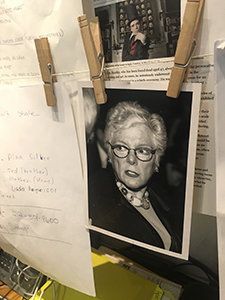 I was always interested. When I was a little kid, I liked to paint and draw. I was very much encouraged to paint and draw both by mother and by my school. Being in New York, I had all these museums. There were a lot of other people who were interested in art that were around me, that were my friends. It seemed sort of natural to go to museums. I enrolled myself when I was 12 in the class for talented children at the Brooklyn Museum. A very interesting place. I was always interested. When I was a little kid, I liked to paint and draw. I was very much encouraged to paint and draw both by mother and by my school. Being in New York, I had all these museums. There were a lot of other people who were interested in art that were around me, that were my friends. It seemed sort of natural to go to museums. I enrolled myself when I was 12 in the class for talented children at the Brooklyn Museum. A very interesting place. |
| Hunter O’Hanian: | You enrolled yourself you said? |
| Linda Nochlin: | I went with a portfolio and they said, “Come on.” |
| Hunter O’Hanian: | Great. |
| Linda Nochlin: | I was always interested in art, music, dance. I loved to dance. The arts. |
| Hunter O’Hanian: | Apart from your writing, have you been drawing and making work through your adult life as well? |
| Linda Nochlin: | No, I quit. |
| Hunter O’Hanian: | How come you quit? |
| Linda Nochlin: | Well, I don’t know. I just got interested in writing about it rather than making it. |
| Hunter O’Hanian: | You have a very long history of publishing. There’s certainly a lot of work that you’ve done with Realism and Courbet. What attracted you to that particular period and that particular genre? |
| Linda Nochlin: | Probably it was political I think. It was during the McCarthy period that I came to maturity. I went to the Institute. I really wanted to work on something that was anti-McCarthy. That was left. I was a person of the left and Courbet was the ideal subject in that. |
| Hunter O’Hanian: | Tell me about what you remember of the McCarthy era and what was going on at the time and how artists and writers were dealt with. |
| Linda Nochlin: | It really was a very oppressive period for people in intellectual and artistic pursuits. Even if they didn’t come and get you, that was always a threat lying over. I remember I began my Frick talk with a long quotation from Karl Marx. People were dumbfounded. I remember my teacher said, “Linda, you’re so brazen.” It was scary times. |
| Hunter O’Hanian: | Watching the news today, do you see any similarities? |
| Linda Nochlin: | No. I think it’s a different thing now. It’s scary in a different way, but you can say what you want. Unless you’re in government. I think it is a different take. It’s not good and it’s not pleasant, but I think it’s different. |
| Hunter O’Hanian: | I noticed…. I’ve read that you said you were introduced to feminism in the late 1960s. You were probably in your 30s at that time. You wrote that you became a feminist virtually overnight. Tell me about that. |
| Linda Nochlin: | I had been in Italy in ‘68, ‘69. I came home and a friend came with all these publications and said, “Do you know about feminism”? It was called the women’s movement. I said, “No.” She said, “Read this.” She left me Off Our Backs and rather the somewhat crude broadsheets of the early feminist movement. I stayed up all night reading and I was a feminist the next day. Certainly I always had been to some degree, but I could see now I could become formally as part of an organization, as part of a movement. Yes, I was a feminist. |
| Hunter O’Hanian: | Do you see the movement alive today? |
| Linda Nochlin: | Mm-hmm [affirmative] yes. But, of course, a lot of people I know happen to be feminists. I don’t know how alive it is otherwise. I think it still is. |
| Hunter O’Hanian: | It’s interesting. I meet a lot of male feminists, too, which back in the beginning of the movement…. |
| Linda Nochlin: | It would be unheard of. |
| Hunter O’Hanian: | It would be unheard of for a man to say he was a feminist. Now there’s many of us who are actually happy to say that. |
| Linda Nochlin: | You think of the Women’s March after the inauguration this year. It was enormous. Enormous. Not every one of those people might be a self-pronounced feminist, but they’re all feminists in the sense that they gathered together to show that they believed in something and were against other things. |
| Hunter O’Hanian: | Of course there’s the essay “Why Have There Been No Great Women Artists?” that you wrote in 1971. I think ARTnews published that? |
| Linda Nochlin: | Yes. |
| Hunter O’Hanian: | First of all, tell me about the title. How did you end up with that title? Why have there been no great women artists? |
| Linda Nochlin: | I was at a Vassar graduation the year before and I think … I can’t remember who it was. He had a gallery. He was a well known gallerist. He said, “Linda, I would love to show women in my gallery, but why are there no great women artists?” I started really thinking about it and one thought followed another. It almost wrote itself. It seemed all so hitched together, so logical. |
| Hunter O’Hanian: | You address the question in the beginning of the essay about how many great artists there are regardless of their gender, the fact of what actually makes a great artist. Talk a little bit about that. |
| Linda Nochlin: | I refuse to say it’s something inborn, a golden nugget I would say, but artistic greatness, artistic production depends so much on time, place, situation, etc. It was no accident that up through the Renaissance, even the 18th century that artists came in families. Father artists, mother artists. You think of the Bach, Johann Sebastian Bach family, family practice. |
| Hunter O’Hanian: | You write in here “The problem lies not so much with some feminist concept of what femininity is, but rather with their misconception shared with the public at large of what art is with the naïve idea that art is the direct personally expression of individual, emotional experience, a translation of personal life into visual terms. Art is almost never that. Great art never is.” |
| Linda Nochlin: | Well that says what I mean. It always takes place within a context, within a setting, certain training, certain standards. What might be considered great art in one period might not be in others. It’s interesting. There’s a certain agreement in the Renaissance. They knew it was Raphael Michelangelo, etc., very little question. |
| Hunter O’Hanian: | You also write here, “the fact of the matter is that there have been no supremely great women artists as far as we know.” I’m happy you added that in, “as far as we know,” although there have been many interesting and very good ones who remain insufficiently investigated or appreciated. |
| Linda Nochlin: | I think that’s been corrected to a certain extent today. |
| Hunter O’Hanian: | Tell me about the ones who have been discovered or investigated. |
| Linda Nochlin: | I suppose Artemisia Gentileschi would be a primary one. Who else? |
| Hunter O’Hanian: | What about women artists in the latter part of the 20th century or beginning part of the 21st century? |
| Linda Nochlin: | I think women artists have definitely caught up as leaders, as being the interesting ones making art and so on. I’m thinking of somebody like Joan Jonas, for example. I’m thinking of somebody like Louise Bourgeois. |
| Hunter O’Hanian: | I was just going to ask you about Louise. |
| Linda Nochlin: | Obviously. |
| Hunter O’Hanian: | Judy Pfaff |
| Linda Nochlin: | The list itself is so long. I’m not saying they’re all Michelangelo, but I’m personally not a Michelangelo person. They’re really interesting and dynamic and have changed the way we look at art, which I think is important. |
| Hunter O’Hanian: | I guess it’s in part because society has allowed them to some degree to be able to do that. |
| Linda Nochlin: | Yes, of course. They had to fight for it, too. |
| Hunter O’Hanian: | Of course. One last quote that I thought was interesting. There’s so much of this essay. I hadn’t read it for years. It’s just so dense. It so wonderful. |
| Linda Nochlin: | It is. I tried to squeeze a lot in. |
| Hunter O’Hanian: | You say “most men despite lip service to equality are reluctant to give up the natural order of things in which their advantages are so great. For women, the case is further complicated by the fact that unlike other oppressed groups or castes, men demand of them not only submission, but unqualified affection as well.” |
| Linda Nochlin: | It’s sort of hard. Say in terms of color, nobody demands that black people love and adore and cater to white people. It’s only gender that does that. It’s very confusing if on the one hand there is somebody you love, live with, etc., yet who is part of a group or caste that is really denying you equality and denying you self-expression. It’s confusing to put it mildly. |
| Hunter O’Hanian: | As we said, we have made progress…. |
| Linda Nochlin: | I think so. |
| Hunter O’Hanian: | But how much progress to do you think that we’ve made? How tough do you think it is for a young woman, 30 years old, starting out today? |
| Linda Nochlin: | I think it’s undeniably better. The conditions are better for a woman succeeding, and a lot of the major artists now certainly are women, but there’s still a boys’ club feeling about certain types of art and certain types of artists. I think you know equality has gone so far and no further maybe. |
| Hunter O’Hanian: | It’s interesting when you think about it in the sense that we think women have had the right to vote for 100 years, but still they don’t get paid the same wage. It’s been 135 years since the Emancipation Proclamation has been signed. |
| Linda Nochlin: | No, it isn’t just done by words or by the progress of a few superstars either. |
| Hunter O’Hanian: | Switching gears, but also on this one a little bit, obviously you’ve been involved in the academy and artistry for many, many years. What is your sense about the future for people graduating out of a master’s programs or PhD programs and getting jobs in higher education today? What do you think about that? |
| Linda Nochlin: | 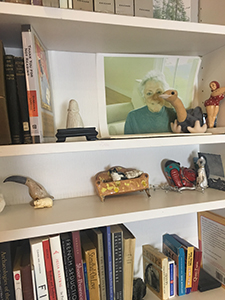 I think it’s a difficult market as far as I can see. Although there are now galleries and museums throughout the country. It’s not just a question of the east coast and the west coast and Chicago. I think there is a sort of spreading, or a spread of art which allows for some jobs, but being an artist is tough no matter how you take it. I think it’s getting ahead, finding a gallery, getting a proper amount of publicity, making sure you show. It’s hard. I think it’s a difficult market as far as I can see. Although there are now galleries and museums throughout the country. It’s not just a question of the east coast and the west coast and Chicago. I think there is a sort of spreading, or a spread of art which allows for some jobs, but being an artist is tough no matter how you take it. I think it’s getting ahead, finding a gallery, getting a proper amount of publicity, making sure you show. It’s hard. |
| Hunter O’Hanian: | What about for scholars, for those getting their PhD about being able to move their careers along? What advice would you have for them? |
| Linda Nochlin: | What advice would I have for them? Be very, very smart. Write a lot. Have strong opinions. Just don’t be a little library worm. |
| Hunter O’Hanian: | It seems your strong opinions have done you well for your career. |
| Linda Nochlin: | I wouldn’t know how to not have them if you know what I mean. That’s what I’m about is my opinions. You have to know something. Frankly I know a great deal. There are very good…. I was a very good student, very good. I worked very hard. I really took pains and energy with my research, not just opinions. They have to be based on something. |
| Hunter O’Hanian: | Can you think of an opinion that you had out there in some of your writing that you looked at it years later and thought, “I wouldn’t have come to the same conclusion?” |
| Linda Nochlin: | I’m sure there are. |
| Hunter O’Hanian: | It’s so interesting how we develop those opinions based upon what we believe at a given time. |
| Linda Nochlin: | Oddly enough I’ve remained more or less consistent. I’ve added some artists in, subtracted some, but the ones that I like are still the ones that I’m interested in. At least many of the issues that I was committed to, I’m still committed to. |
| Hunter O’Hanian: | What are you working on now? |
| Linda Nochlin: | I’ve just finished a large book called Misère about the representation about misery in the second half of the 19th century in France and England. |
| Hunter O’Hanian: | Wonderful. |
| Linda Nochlin: | That’s at the publisher right now. |
| Hunter O’Hanian: | When should we expect to see it? |
| Linda Nochlin: | In the fall I should think. Thames & Hudson as usual.* *Update: Misère is slated for release after Spring 2018. |
| Hunter O’Hanian: | Are you excited about it? |
| Linda Nochlin: | Yeah, I am. I laughingly said to my editor, “Are you going to be able to sell a book called Misère?” He said, “Misère by Linda Nochlin, yes.” It was fascinating, really interesting. It pulls together a lot of things I’ve been interested in all along. It’s both new territory, but based on elements that I’ve been interested in for a long time. |
| Hunter O’Hanian: | Any nuggets that you want to give away from that that come to mind? |
| Linda Nochlin: | Let me think. There’s been relatively little in investigation of the representation of the poor and oppressed. Middle class Impressionism, etc., upper class before that, religious high-minded themes, battles, just the everyday lives of the poor and “uninteresting,” so to speak, not much setting. |
| Hunter O’Hanian: | It’s interesting because that seems like a very timely topic for us. |
| Linda Nochlin: | Exactly I thought of that too. |
| Hunter O’Hanian: | As we think of how elections change and how government change and how the education system changes about access, I think it seems.… |
| Linda Nochlin: | Absolutely. It was certainly true in the 19th century, early 20th. I think it’s an interesting book. I hope other people find it interesting. |
| Hunter O’Hanian: | I look forward to seeing it. Thank you so much for allowing us here in your home. It was great to chat with you about these things. |
| Linda Nochlin: | Good. |
| Hunter O’Hanian: | I look forward to seeing you at another CAA event soon I hope. |
| Linda Nochlin: | I hope so. |
| Hunter O’Hanian: | Thank you. |
| Linda Nochlin: | I would love to. Thank you. |
Books Published by CAA Members
posted by CAA — Jun 06, 2017
Publishing a book is a major milestone for artists and scholars—browse a list of recent titles below.
Books Published by CAA Members appears every two months: in February, April, June, August, October, and December. To learn more about submitting a listing, please follow the instructions on the main Member News page.
June 2017
Jeffrey Abt. Valuing Detroit’s Art Museum: A History of Fiscal Abandonment and Rescue (New York: Palgrave Macmillan, 2017).
Matthew Baigell. The Implacable Urge to Defame: Cartoon Jews in the American Press, 1877–1935 (Syracuse, NY: Syracuse University Press, 2017).
Thea Burns. The “Compositiones variae”: A Late Eighth-Century Craftsman’s Technical Treatise Reconsidered (London: Archetype, 2017).
Kim Grant. All about Process: The Theory and Discourse of Modern Artistic Labor (University Park: Pennsylvania State University Press, 2017).
James Housefield. Playing with Earth and Sky: Astronomy, Geography, and the Art of Marcel Duchamp (Lebanon, NH: University Press of New England; Hanover, NH: Dartmouth College Press, 2016).
Ruth E. Iskin, ed., Re-envisioning the Contemporary Art Canon: Perspectives in a Global World (New York: Routledge, 2017).
Tirza True Latimer. Eccentric Modernisms: Making Differences in the History of American Art (Oakland: University of California Press, 2016).
Chari Pradel. Fabricating the Tenjukoku Shūchō Mandara and Prince Shōtoku’s Afterlives (Leiden, the Netherlands: Brill, 2016).
Athena Tacha. Visualizing the Universe: Athena Tacha’s Proposals for Public Art Commissions 1972–2012, ed. Richard E. Spear, introduction by Glenn Harper and Twylene Moyer (Washington, DC: Grayson, 2017).
Southeast of Now: Introducing a New Journal about Contemporary and Modern Asian Art
posted by Chye Shu Wen, Publicity and Marketing Manager at National University of Singapore Press — May 25, 2017
One of the great challenges of our time is to make sense of the world on a global scale, even while facing ever more urgent concerns at various local levels. While artists, curators, critics, and scholars of art have embraced this challenge for some time now, the global discourse of contemporary and modern art remains stubbornly asymmetrical, with many contexts for discussion oriented to the North and the West, and also to the new and the now.
Southeast of Now: Directions in Contemporary and Modern Art in Asia was established by a collective of scholars and curators as a discursive space for creating encounters between critical texts of contemporary and modern art produced in, from, and around Southeast Asia. The editorial board includes researchers from Singapore, Thailand, Indonesia, Philippines, Australia, New Zealand, Cambodia, and Malaysia. It is presently the only scholarly journal dedicated to the recent art of this region.
 The journal presents a necessarily diverse range of views not only on the contemporary and modern art of Southeast Asia, but indeed of the region itself: its borders, its identity, its efficacy, and its limitations as a geographical marker and a conceptual category. As such, the journal is defined by a commitment to the need for and importance of rigorous discussion of the contemporary and modern art of the domain that lies south of China, east of India, and north of Australia.
The journal presents a necessarily diverse range of views not only on the contemporary and modern art of Southeast Asia, but indeed of the region itself: its borders, its identity, its efficacy, and its limitations as a geographical marker and a conceptual category. As such, the journal is defined by a commitment to the need for and importance of rigorous discussion of the contemporary and modern art of the domain that lies south of China, east of India, and north of Australia.
Why ‘Southeast’ of ‘Now’?
The title of the journal has a playful yet provocative function as a reminder that Southeast Asia is named, and to a large extent discursively defined, in relation to an imagined geographical center in the North and the West. It is also a reminder that discussions of contemporary and modern art are increasingly framed by an imagined temporal center: that of the now.
The lack of educational infrastructure of art history in most countries in Southeast Asia was one of the principal motivations behind the creation of the journal. Resisting the pressure to be always up-to-date and forever new, the journal instead values the historicizing of recent practices, from the nineteenth century (and before) to the present (and after). This historical perspective is a foundation for contributions which may otherwise draw on a diverse range of disciplines and methodologies.
Of Themes and Form(ations)
The playful disquiet evoked by the title of the journal, which troubles linear notions of space-time and destabilizes any certainty of an imagined temporal center, gave rise to the inaugural volume’s theme: Discomfort. The provocations that the Southeast of Now editorial collective sought included pieces that reflect on the burdens and future possibility of wielding “regionalism” as a framework. The editors hope to locate this source of tension and anxiety through various discourses and narratives. Texts published in the journal’s first issue suggest also the possibility to discover some comfort within unease, even if merely within shared discomfort.
One key feature of the journal is the inclusion of less academically-driven sections (‘Interview’, ‘Archive’, ‘Artists’ Projects’ and ‘Review’)—spaces the editors felt were necessary for creating discourses about contemporary and modern Southeast Asian art, and providing access to conversations that are already ongoing. It was important for them to create an open platform within the journal where they could create opportunities for artistic responses as well as scholarly articles. Many contemporary artists are engaged in artistic research and are eager to present their views in formats other than written texts, essays, or reviews.




Images from video interview with Pak Edhi Sunarso by Tom Nicholson and Grace Samboh
In Volume 1, Number 1, for example, the section titled Artists’ Projects features a video by Tom Nicholson and Grace Samboh, in which they documented their interview with Pak Edhi Sunarso, one of Indonesia’s most eminent sculptors. Southeast of Now is a fitting place where this kind of research material could travel beyond the site of the physical exhibition in which it was originally viewed, which was the Jakarta Biennale. Within the context of the journal it is not only an artwork to be experienced; it is also a primary source of research material about a valuable figure in Indonesia’s modern art history.
The structure of the journal also provides numerous curatorial possibilities. The Artists’ Projects pages offer a space for a specifically curated sequence of images or texts, either by a member of the editorial collective, a guest curator, or a respondent to a call for proposals. This follows new approaches to publishing where printed matter may be considered as an exhibition format in two-dimensional form. In future issues the editors will alternate such presentations with archival pages from various collections within and beyond the region, as well as translations and other resources.
The Art of Re/De-Categorizing
Southeast of Now effectively aims to be a platform where the categories of “contemporary and modern art,” indeed of “art” in general, as much as the category of “Southeast Asia” itself, will always be open for debate. The editors anticipate continuous challenges in redefining these categories, by looking at aspects of culture that do not usually qualify as “art,” by treating the region’s borders as fluid, and also by looking at research that transcends these borders.
The journal strives to remain committed to the importance of an historical approach, however interwoven with methodologies from other disciplines and practices. The editors hope that future issues of the journal will look further back in time, to the nineteenth century (and before) with the goal of placing the historical research in dialogue with issues of today.
****
The journal is published by the National University of Singapore Press and it is published twice a year (March and October), in print and online via Project MUSE.
To find out more about submission guidelines and subscription information, visit www.southeastofnow.com or the National University of Singapore Press website.
Images from video interview with Pak Edhi Sunarso by Tom Nicholson and Grace Samboh
Affiliated Society News for May 2017
posted by CAA — May 18, 2017
Association for Latin American Art
At ALAA’s annual business meeting held at CAA in New York, a new slate of officers was elected: Michele Greet, President; Ananda Cohen-Aponte, Vice President; and Helen Ellis, Secretary-Treasurer. ALAA presented its 17th Annual Arvey Book Award to George Flaherty for Hotel Mexico: Dwelling on the ’68 Movement (University of California Press, 2015). Alessandra Russo, Gerhard Wolf, and Diana Fane, eds., received honorable mention for their book, Images Take Flight: Feather Art in Mexico and Europe 1400–1700 (Kunsthistorisches Institut-Max-Planck Institut and the Museo Nacional de Arte, 2015).
The prize for the best dissertation in Latin American Art History was given to Sara Ryu for “Calendar, Column, Crucifix: Material Reuse in the Early Modern Transatlantic World” (Yale University). ALAA’s sponsored session for 2017 was “The Evolving Canon: Collecting and Displaying Spanish Colonial Art” chaired by Ilona Katzew and Ellen Dooley. Elisa C. Mandell, Georgina G. Gluzman, and Ana Mannarino chaired the “Open Session for Emerging Scholars of Latin American Art.” ALAA currently has 460 members (up from 377 last year) from universities, museums, and foundations in the United States, Canada, Costa Rica, Brazil, Mexico, Argentina, Peru, Bolivia, Chile, and Spain. Members conduct research in all major time periods and geographic regions of Latin America, as well as on Latino/a art of the United States.
FATE (Foundations in Art: Theory and Education)
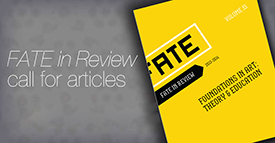 Thank you to all who attended the 16th Biennial FATE Conference, “To the Core and Beyond” in Kansas City in April! We had an excellent turn out! And, please welcome the new and returning board members elected during the conference.
Thank you to all who attended the 16th Biennial FATE Conference, “To the Core and Beyond” in Kansas City in April! We had an excellent turn out! And, please welcome the new and returning board members elected during the conference.
In Episode 9 of Positive Space, FATE’s monthly podcast, Valerie Powell has a thoughtful conversation with FATE’s 2017 keynote speaker, artist and author Enrique Martinez, about the artistic process and the ongoing choice to live a creative life.
More info here and listen to episodes on our Apple iTunes page.
In addition, FATE in Review seeks thoughtful articles relating to all areas of foundations education, including expanding the practicum, flexing the core, and re-visioning visual culture. Conference papers and/or presentations, as well as papers written solely for publication, may be submitted throughout the year. We are also interested in reviews of newer books that inform foundations discussion and curriculum. Contact FATE in Review Editor, Michael Marks.
Upcoming for CAA 2018: FATE’s CAA Affiliate representative, Naomi J. Falk, is looking for panelists for FATE’s affiliate conference session, entitled, “Let’s Dance, But Don’t Call Me Baby: Dialogue, Empathy, and Inclusion in the Classroom and Beyond.” Feeling welcome, acknowledged, and heard encourages learning. Fostering inclusiveness and empathy on behalf of minority students legitimizes perspectives. How do we build trust and empathy between faculty, students, peers, and others in our classrooms and communities? How do we create a welcoming and inclusive environment? What has worked? What has gone terribly wrong? Where do we go from here? Examples of readings, projects, tools, and exercises for building inclusive, encouraging, and productive dialogues are all of interest. More info? Please contact: Naomi J. Falk.
The Feminist Art Project
 The Feminist Art Project is pleased to announce that the second issue of Rejoinder is now available. The theme of the issue is Borders, Bodies, Homes. Contributors explore how these concepts shape our understandings of selfhood and exile in an environment marked by migratory population flows, resurgent nationalisms, and state-sanctioned violence. Rejoinder features essays, fiction, and artwork by Joshua G. Adair, Connie Freid, Yishay Garbasz, Uddipana Gosswami, Leigh Johnson, Elinor Meeks, Vukasin Nedeljkovic, Jeffrey Shandler, Rachida Yassine, and Helena Zeweri. Sarah Tobias is the editor.
The Feminist Art Project is pleased to announce that the second issue of Rejoinder is now available. The theme of the issue is Borders, Bodies, Homes. Contributors explore how these concepts shape our understandings of selfhood and exile in an environment marked by migratory population flows, resurgent nationalisms, and state-sanctioned violence. Rejoinder features essays, fiction, and artwork by Joshua G. Adair, Connie Freid, Yishay Garbasz, Uddipana Gosswami, Leigh Johnson, Elinor Meeks, Vukasin Nedeljkovic, Jeffrey Shandler, Rachida Yassine, and Helena Zeweri. Sarah Tobias is the editor.
Rejoinder is an online journal published by the Institute for Research on Women in partnership with The Feminist Art Project, both at Rutgers, The State University of New Jersey. Please subscribe in order not to miss out on future issues!
Historians of Netherlandish Art
The Historians of Netherlandish Art are pleased to announce their new officers for the term 2017–2021: President: Paul Crenshaw; Vice-President: Louisa Wood Ruby; immediate past president: Amy Golahny. Please visit our website for more information.
The current issue of the Journal of the Historians of Netherlandish Art (JHNA vol. 9:1, Winter 2017) is dedicated to Walter Liedtke and includes seventeen articles that reference works in the Metropolitan Museum of Art under his care. The formal deadline for submissions to the Winter 2018 and Summer 2018 issues is August 1, 2017, although the editors accept submissions throughout the year.
From Thursday 24 May to Saturday 26 May 2018, the three-day conference of the Historians of Netherlandish art will take place at Het Pand in Ghent (BE). The call for sessions and workshops can be found here.
For further information, visit: www.hnanews.org.
The International Center of Medieval Art
Newly-elected officers Helen Evans (President), Nina Rowe (Vice President), and Anne Rudloff Stanton (Secretary), and several other new board members, have begun their three-year terms.
The ICMA invites submissions for their annual Book Prize, to be awarded to the best single-authored book on any topic in medieval art published in 2016 (deadline May 31). Through the generosity of the Samuel H. Kress foundation, they also award Research and Publication Grants (deadline August 31) as well as Travel Grants supporting the travel of speakers in ICMA-sponsored sessions (rolling deadlines).
Recent print and digital publications include the organization’s peer-reviewed journal Gesta (volume 56, number 1, Spring 2017). The ICMA’s newest digital initiative to go public is Lordship and Commune: A Collaboratory, an interactive digital website about the cathedrals of Reims and Amiens in their medieval and modern contexts. This project is an innovative way to invite conversation and collaboration around the major unfinished study on these two cathedrals by the late Barbara Abou-El-Haj, and is intended to be accessible as a teaching and research resource.
Society of Architectural Historians (SAH)
 The Society of Architectural Historians is now accepting abstracts for its 71st Annual International Conference in Saint Paul, MN, April 18–22, 2018. Please submit an abstract no later than 5:00 p.m. CDT on June 15, 2017, to one of the 45 thematic sessions, the Graduate Student Lightning Talks or the open sessions. SAH encourages submissions from architectural, landscape, and urban historians; museum curators; preservationists; independent scholars; architects; scholars in related fields; and members of SAH chapters and partner organizations. View the call for papers.
The Society of Architectural Historians is now accepting abstracts for its 71st Annual International Conference in Saint Paul, MN, April 18–22, 2018. Please submit an abstract no later than 5:00 p.m. CDT on June 15, 2017, to one of the 45 thematic sessions, the Graduate Student Lightning Talks or the open sessions. SAH encourages submissions from architectural, landscape, and urban historians; museum curators; preservationists; independent scholars; architects; scholars in related fields; and members of SAH chapters and partner organizations. View the call for papers.
SAH is partnering with the Global Architectural History Teaching Collaborative to offer Research-to-Teaching Grants and Field Seminar Travel Grants. These new grants are part of the GAHTC’s nearly $500,000 in funding to build new content for its free, digital platform of teaching materials.
SAH seeks partners to organize tours of the built environment for our youth-oriented American Architecture and Landscape Field Trip program. Created to provide opportunities for underserved students from the third grade through high school, SAH offers grants to not-for-profits to organize tours for young people on the history of architecture, parks, gardens, and town/city planning. Application details here.
Registration is open for the SAH Field Seminar to China led by Chinese architectural historian Nancy Steinhardt. This twelve-day trip (December 26, 2017–January 7, 2018) will offer an in-depth view of South China’s cities, buildings, and sites through the course of two millennia. In addition to the buildings and museums on every tourist itinerary, we will visit UNESCO and World Heritage sites, a second-century BCE tomb, a glass pagoda, churches, a mosque, a rare example of “beamless” construction, memorials to Sun Yat-sen, sixteenth-century merchant residences, nineteenth-century European residences, and a Dong drum tower, and we will meet practicing architect-architectural historians. Fellowship deadline is August 31.
The Society of Historians of East European, Eurasian, and Russian Art and Architecture (SHERA)
SHERA moved to H-SHERA network and is now live in the H-Net Commons. Anyone can browse the site, but you’ll need to log in to post.
SHERA also voiced protest against the close down of the Central European University in Budapest.
The U.S. Latinx Art Forum (USLAF)
USLAF is a new CAA affiliated society. We held our first business meeting at the 2017 Annual Conference and also hosted a plenary session on the state of U.S. Latinx art. The plenary was structured as a two-part discussion beginning with Adriana Zavala (USLAF and Associate Professor, Tufts University) in conversation with Roberto Tejada (secretary, CAA Board of Directors; Professor, University of Houston) and Hunter O’Hanian (executive director, CAA) about the representation of Latinx art history within academia and arts organizations. Curators Rocío Aranda-Alvarado (El Museo del Barrio), Tey Marianna Nunn (National Hispanic Cultural Center) and David Breslin (Whitney Museum of American Art) followed with a discussion on structural barriers impacting the exhibition and acquisition of Latinx art. The session concluded with a roundtable and important interventions from the audience.
For the 2018 Annual Conference, USLAF’s affiliated session will be “Chican@ Art History: Interdisciplinary Foundations and New Directions,” co-chaired by Karen Mary Davalos and Mary Thomas. The session’s CFP will go out in June 2017.
USLAF was founded in 2015 to create a network of artists and scholars committed to expanding and enhancing the visibility of U.S. Latinx art within academia, exhibition spaces, and private and institutional collections. We now boast over 220 members and hope that all CAA members interested in expanding the discipline and/or learning more about US Latinx art will join. To become a member, please visit our website or send an email to info@uslaf.org.
USLAF’s founding Executive Committee is: Adriana Zavala (Director), Rose Salseda (Associate Director), Josh T Franco (Secretary and Membership Coordinator), Sonja Gandert (Social Media), and Sam Romero (Creative Director and Web Developer).
Visual Resources Association (VRA)
The Visual Resources Association (VRA) honored the recipients of the organization’s awards at a Members & Awards lunch on Friday, March 31, 2017, during its 35th annual conference in Louisville, Kentucky. The 2017 Nancy DeLaurier Award was presented to Anne M. Young, Manager of Rights and Reproductions at the Indianapolis Museum of Art. She was honored for the publication, Rights and Reproductions: The Handbook for Cultural Institutions (Indianapolis Museum of Art and American Alliance of Museums, 2015) that she compiled and edited.
For his many years of remarkable dedication, leadership, and service to the VRA and to the visual resources and library professions, the 2017 Distinguished Service Award was presented to Allan T. Kohl, Visual Resources Librarian at the Minneapolis College of Art and Design. As one nomination letter stated, “Allan embodies the professionalism for which we as visual resources professionals strive.” Allan achieved this high honor through his ten consecutive years serving on the VRA Board as president-elect, president, past president, and treasurer. He was a founding director of the VRA Foundation and has chaired and served on many committees and task forces throughout his years as a VRA member. Allan continues to be a leader on VRA’s Intellectual Property Rights Committee, contributing pragmatic tools such as the Digital Rights Computator (DIRC). He generously developed and maintains Art Images for College Teaching (AICT) as an open website populated with his superb photographs depicting world monuments. Allan is a regular presenter and leader in various capacities at VRA conferences. Allan’s “what can I do to help” perspective is a true representation of the VRA community. The recipients and donors of the twelve 2017 Travel Awards were also recognized during the event.











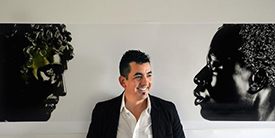 Ken Gonzales-Day
Ken Gonzales-Day
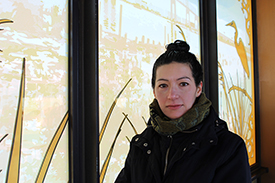 Jenna Lucente
Jenna Lucente


















